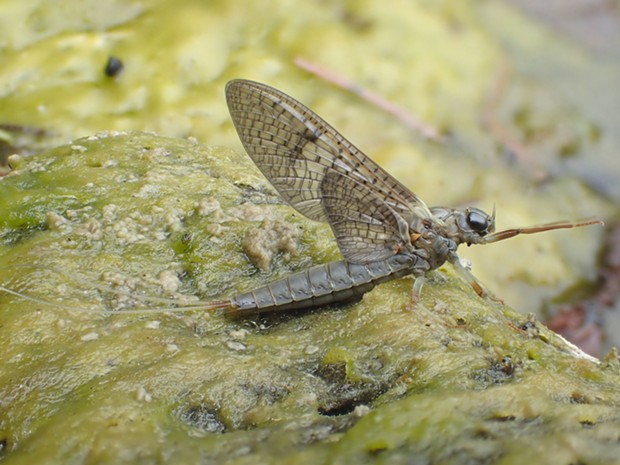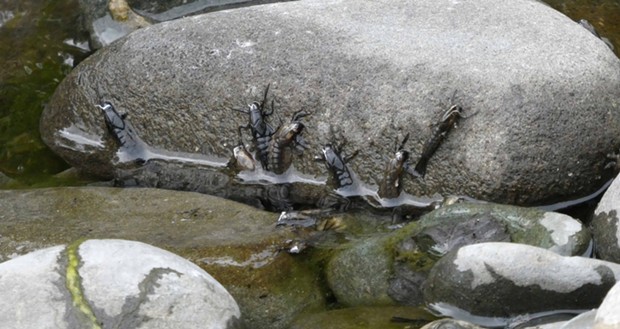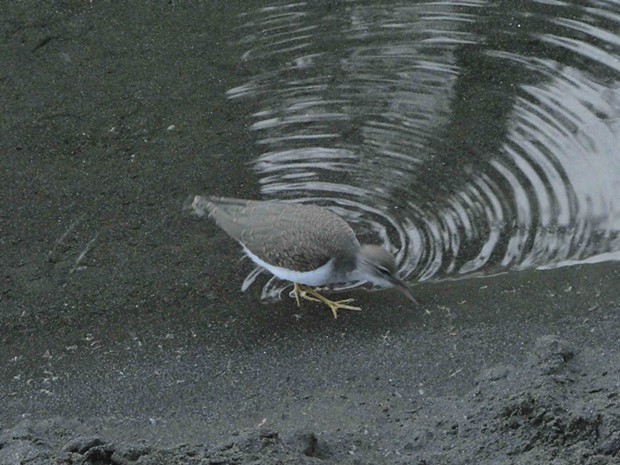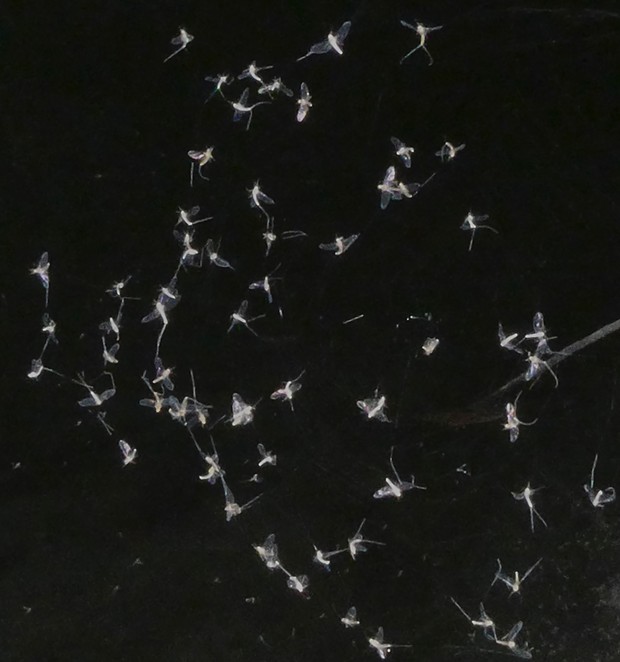Sunday, August 25, 2019
HumBug: Mayflies on the Van Duzen
Posted By Anthony Westkamper on Sun, Aug 25, 2019 at 11:10 AM
Getting a late start, I made my way down to the river after the sun had gone from the canyon. I noted many tiny flying insects 6 inches on either side of the water's edge. A spotted sandpiper (Actitis macularius) strolled up the minute beach pecking here and there as it went. The insects I saw were small mayflies, thousands of them.
This order, ephemeroptera (meaning “brief wing”), along with odonata (dragonflies and damselflies) are part of the division palaoptera (early wing). Members of this group were ancient before the first vertebrate ever took flight. In fact, it might have been the ready supply of food in the air that gave the earliest flying vertebrates the evolutionary edge they needed to succeed.
These insects spend one to two years as naiads (larva) in the water feeding on detritus and algae before emerging, shucking off their larval shell and flying off as “sub-imagos.” Almost immediately they molt a second time into their fully adult reproductive form. No other order of insects molts a second time after getting functional wings.
Without functioning mouthparts or digestive system they are probably one of the most inoffensive creatures on the planet. Upon breaking free of the water's surface tension (not a sure thing in itself) the sub-imagos (known to fly fishermen as duns) and fully adult imagos (spinners) have a very limited time to run a horrific gauntlet of predators, find a mate and lay eggs providing for the next generation before they quite literally run out of fuel and die. Some species have only minutes to complete this part of their life cycle.
As I watched the small shore bird made its way up the water's edge pecking here and there at the tiny insects. A spider's web was festooned with their struggling bodies. I suspect the web's builder was overwhelmed by the sheer number of them. Here and there tiny fish hazarded the shallow water to sip them down, and water striders skated among the ones stuck in the water's film dining at will. Some larger flying insect flitted through the little clouds, I suspect eating its fill.
Throughout the year various species “hatches” occur on different dates. Sometimes they fill the sky with millions of individuals, so much so they can occasionally be tracked by weather radar.
At these times they is a huge reservoir of nutrients made available to the denizens of the river system.
Adults are easily recognized by their habit of holding their triangular wings over their back and the distinctive two or three cerci (tails). Since they have such a brief time to leave the water, find a mate and lay eggs, they seldom stray far from their native streams.
This order, ephemeroptera (meaning “brief wing”), along with odonata (dragonflies and damselflies) are part of the division palaoptera (early wing). Members of this group were ancient before the first vertebrate ever took flight. In fact, it might have been the ready supply of food in the air that gave the earliest flying vertebrates the evolutionary edge they needed to succeed.
These insects spend one to two years as naiads (larva) in the water feeding on detritus and algae before emerging, shucking off their larval shell and flying off as “sub-imagos.” Almost immediately they molt a second time into their fully adult reproductive form. No other order of insects molts a second time after getting functional wings.
Without functioning mouthparts or digestive system they are probably one of the most inoffensive creatures on the planet. Upon breaking free of the water's surface tension (not a sure thing in itself) the sub-imagos (known to fly fishermen as duns) and fully adult imagos (spinners) have a very limited time to run a horrific gauntlet of predators, find a mate and lay eggs providing for the next generation before they quite literally run out of fuel and die. Some species have only minutes to complete this part of their life cycle.
As I watched the small shore bird made its way up the water's edge pecking here and there at the tiny insects. A spider's web was festooned with their struggling bodies. I suspect the web's builder was overwhelmed by the sheer number of them. Here and there tiny fish hazarded the shallow water to sip them down, and water striders skated among the ones stuck in the water's film dining at will. Some larger flying insect flitted through the little clouds, I suspect eating its fill.
Throughout the year various species “hatches” occur on different dates. Sometimes they fill the sky with millions of individuals, so much so they can occasionally be tracked by weather radar.
At these times they is a huge reservoir of nutrients made available to the denizens of the river system.
Adults are easily recognized by their habit of holding their triangular wings over their back and the distinctive two or three cerci (tails). Since they have such a brief time to leave the water, find a mate and lay eggs, they seldom stray far from their native streams.
Speaking of...
-
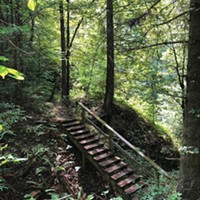
Van Duzen Venture
Aug 27, 2020 -
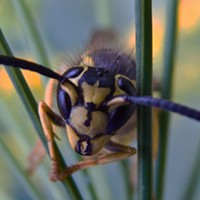
HumBug: Saps, Jumpers and Stingers
Mar 1, 2020 -
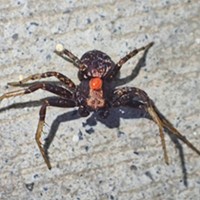
Parasites all the Way Down
Feb 20, 2020 - More »
more from the author
-
HumBug: Early Spring Pollinators
- Apr 12, 2020
-
HumBug: A Recipe for History
- Apr 5, 2020
-
HumBug: Bugs in the City
- Mar 29, 2020
- More »
